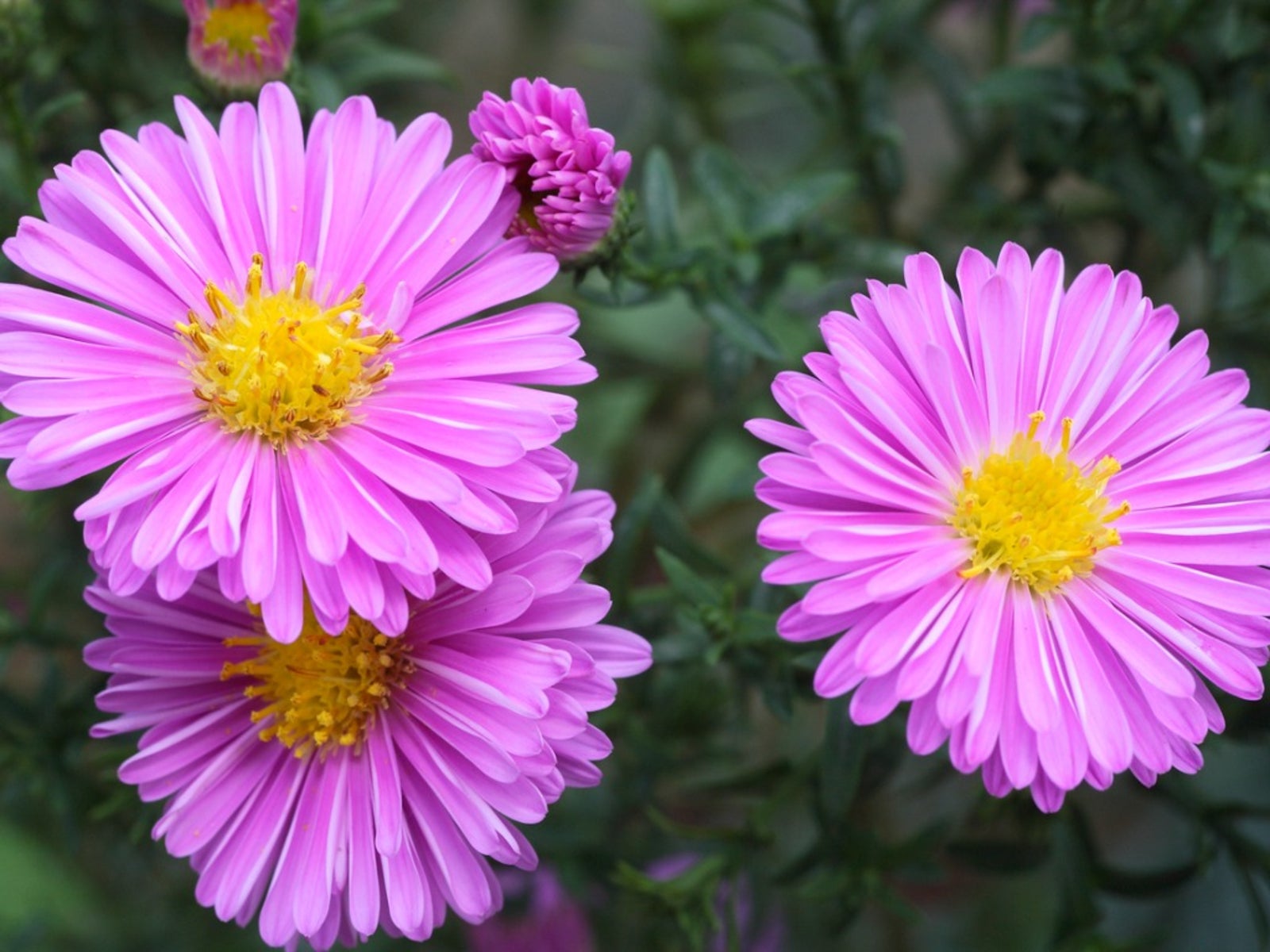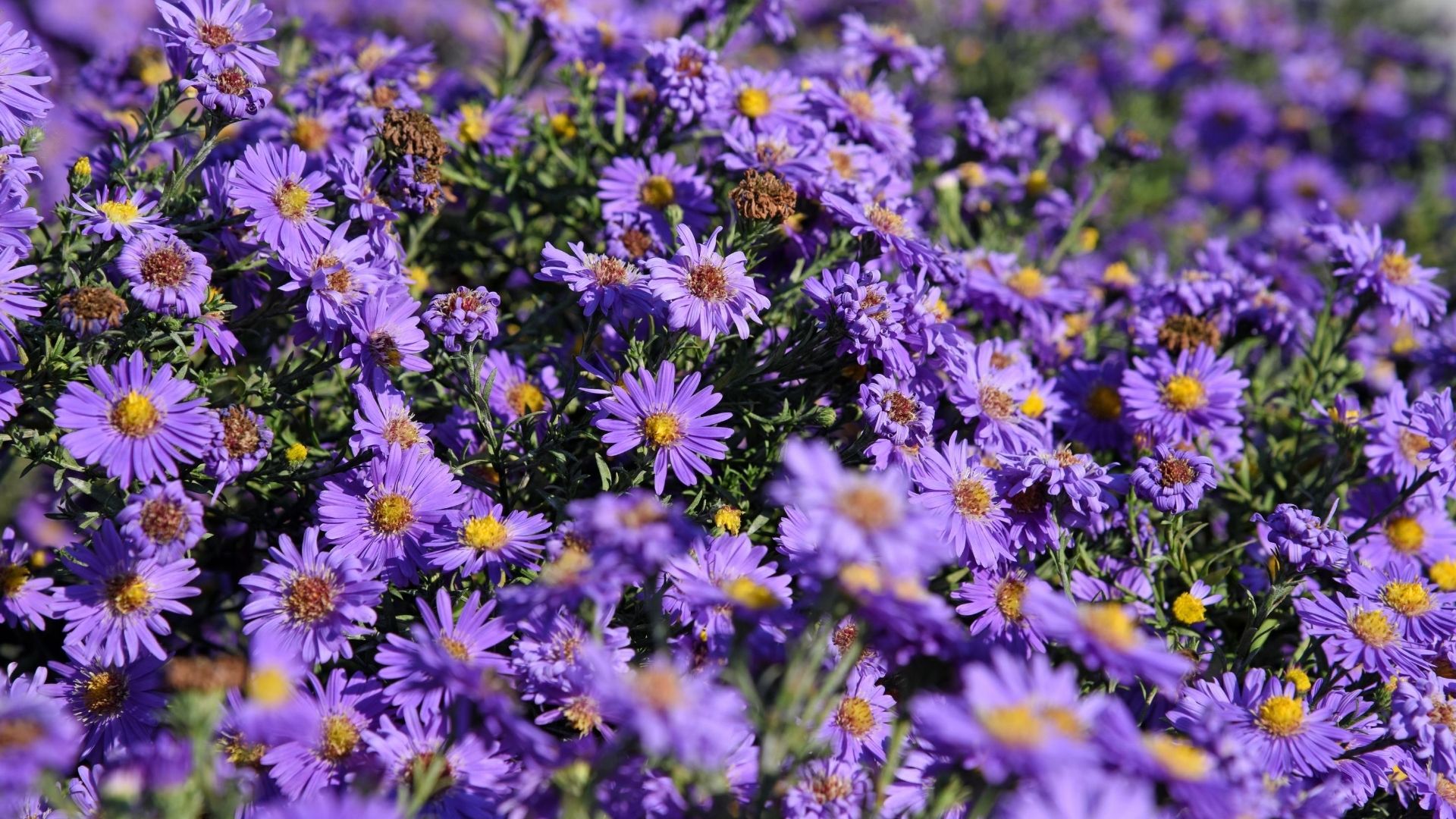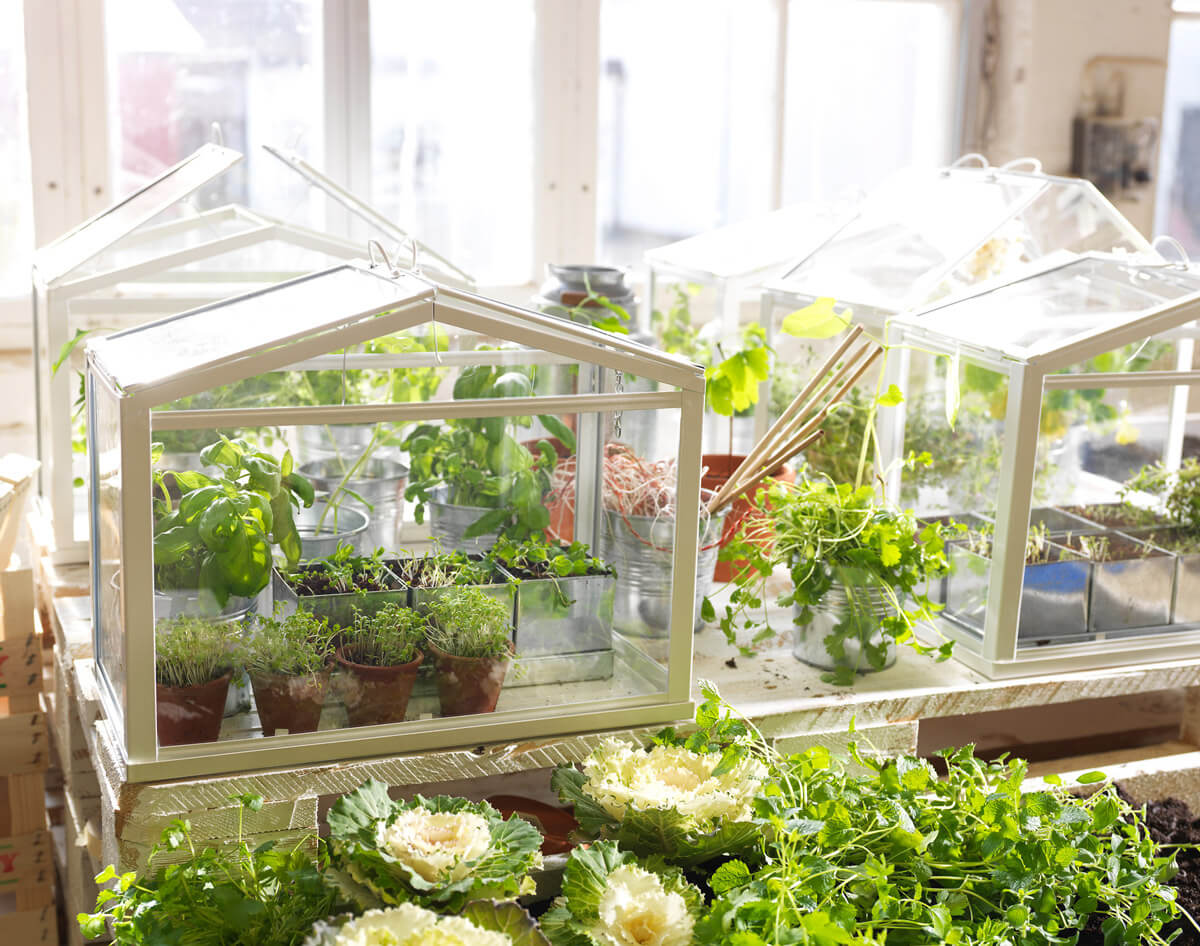Aster Flowers Explained: Your Clear, Complete Guide to Growing and Caring

You know that feeling when you want to add some cheer and color to your garden but also want something tough enough to forgive your rookie gardener mistakes? Welcome to the world of asters — they’re basically the chill, reliable buddy of flowers. I’ve been there, staring at a seed packet wondering if these little things will actually grow or just haunt me with brown leaves. Spoiler: they can thrive with a little love, and I’m here walking you through every step from “What’s an aster?” to “Wow, my asters are thriving!”

1. What in the World Are Asters Anyway? (The Beginner’s Lowdown)
Let’s get real — before I had my first batch, “aster” sounded like some fancy star constellation. Turns out, it sort of is! The name “aster” means star in Greek because their daisy-like flowers have petals radiating around a bright center like tiny stars.
- Family ties: They come from the Symphyotrichum genus (fancy word alert!) within the huge sunflower family.
- Home turf: Mostly North America natives but cousins exist worldwide.
- Look & feel: Picture clusters of slender petals coming off a yellow or orange center disc — colors vary from soft blue to vibrant purple, pinks, whites… even multi-hued surprises!
- Types for different vibes:
- Tall guys like New England asters can tower 5–6 feet (perfect if you want drama).
- Dwarfs stay compact, perfect as cute border fillers.
Here’s why asters rock for beginner gardeners:
- They bloom late summer into fall — right when most flowers start saying goodbye.
- They attract butterflies & bees like nature's free party hosts.
- Resistant to deer (a huge win if you don’t want unexpected snackers).
2. Starting Your Aster Adventure: From Zero Confidence to Green Thumb
When I planted my first asters back in 2019, it was more trial-and-error than smooth sailing. Here’s what finally clicked for me:
Step 1: Find the Sunspot
Asters need at least six solid hours of sun daily. Partial shade means fewer blooms—kind of like when you’re half-asleep trying to be productive.
Step 2: Soil Setup – Don’t Stress Too Much
They prefer soil that drains well with organic matter—think fluffy beds rather than soggy swamps. If your dirt feels like concrete or sandpaper, mix in compost or peat moss.
Quick personal note: I once tried planting directly into clay-heavy soil without prep; those plants sulked all season. Lesson learned!
Step 3: Planting Time Tricks
Try early spring after frost danger passes — this gives them months to establish before flowering season hits.
- For seeds: Start indoors about 6–8 weeks ahead using seed trays and keep soil moist but not soaked.
- Divisions work great too — gently separate clumps during fall or early spring dormancy.
Step 4: Water Like You Mean It (But Not Too Much)
Keep soil evenly moist especially during dry spells but avoid puddles—these guys hate soggy roots almost as much as I hate soggy cereal.
Pro tip: Set phone reminders until watering becomes muscle memory.
Step 5: Feed Me Right
Asters don’t scream for food constantly but appreciate balanced fertilizer at planting and mid-season if growth lags. Beware nitrogen overload—it makes lanky stalks instead of sturdy bushes loaded with blooms.
Step 6: Deadheading – The Secret Sauce
Pinch off those faded blooms regularly; it sends signals saying “Hey plant, keep flowering!” Even skipping this every now and then won’t wreck everything—promise—but regular care pays off big time.
3. Rookie Mistakes I Made (& How You Can Dodge Them)
It took me two seasons before I stopped making these classic errors:
- Overcrowding: Cute at first glance but suffocates plants causing mildew nightmares.
- Neglecting deadheading: Leads to early flower dropout.
- Wrong spot drama: Asters moping under shade = sad spindly stems.
- Ignoring division: After a few years clumps get tired and bloom less; split them up every 2–3 years.
- Ditching drainage prep: Root rot loves wet feet just waiting for weak spots.
Fixes? Space plants about a foot apart + pick sunny spots + set deadheading reminders on your phone + plan division dates in calendar + amend soil for drainage or use raised beds if needed.
Once these clicked for me—a major lightbulb moment happened. My asters went from meh to wow practically overnight!
4. Leveling Up: Fancy Tips Once You Know The Basics
Ready for the joy ride? These next tricks helped transform my patch into an autumn highlight reel:
Succession Planting For Long Bloom Love
Instead of one species blooming all-at-once then vanishing, stagger different varieties so colors pop week after week — keeping neighbors curious and butterflies busy till frost shows up.
Pair With Friends Who Play Nice
I love pairing asters with sedum and ornamental grasses; their textures & colors mix beautifully while sharing similar care routines so no one gets jealous on watering day.
Mulch Without Mucking It Up
Spread straw or pine needles around roots—but leave a tiny gap near stems—to lock moisture yet keep fungal guests away from crowns.

Pinching for Bushiness
Early season pinch backs before buds form encourage branching instead of all energy going vertical—result? Plants packed with more flowers rather than sparse stalks waving in the wind alone.
Smart Fertilizing Swaps
Start with balanced feedings pre-bloom but switch closer to flowering time toward phosphorus-heavy fertilizers encouraging bigger heads rather than leafy monsters.
5. Gear That Makes Gardener Life Easier
Running around barehanded digging holes sounds romantic until reality bites—that’s where trusty tools save sanity:
- Sharp pruners (like Felco bypass models) make clean cuts when deadheading or dividing—a clean cut means healthier regrowth.
- Garden trowel & fork help prepping soil without destroying roots accidentally.
- Affordable soil test kits pinpoint pH/nutrient fixes so no guessing games.
- Organic fish emulsion fertilizer feeds deep-rooted perennials gently without chemical overload.
- Mulching materials like straw or shredded bark suit best around roots.
- Books like The American Gardener’s Calendar by Barbara Damrosch paired with online forums such as GardenWeb provide ongoing support when doubts creep in late at night!
6. When Things Go Sideways: Troubleshooting Tales
Even seasoned gardeners face hiccups; here’s what tripped me up along the way:
| Issue | What You'll See | Why It Happens | Quick Fix |
|---|---|---|---|
| Powdery Mildew | White powder on leaves | Crowded plants + humidity | Thin out clumps; apply neem oil spray |
| Leaf Spots | Yellow/brown patches on leaves | Wet foliage & fungus | Remove damaged parts; improve airflow |
| Root Rot | Wilting despite watering | Overwatering/poor drainage | Fix drainage; water less frequently |
| Aphids | Sticky "honeydew" residue | Stress + overcrowding | Spray insecticidal soap early morning |
| Deer Bites | Ragged leaf edges | Hungry local wildlife | Use repellents/fencing |
Remember catching signs early is key! Last fall caught powdery mildew early simply by spacing better saved that patch completely from doom-induced anxiety :)
7. Real-Life Wins To Inspire Your Journey
I used to think successful gardens only happen on TV shows until…
Anna's Urban Balcony Breakthrough – Limited space meant dwarf asters grown container-style plus careful watering led her balcony blooming after just three months despite city pollution challenges!
Mark's Wildlife Wonderland – Adding New England asters alongside milkweed watched monarch butterfly numbers surge visibly within weeks—a true pollinator haven now maintained annually!
Laura's Overgrown Bed Rescue – Aggressive division plus strict deadheading turned what looked like disease-ridden mess into showstopper garden bed full of vibrant blooms last fall season!
These stories tell us loud and clear: everyone starts somewhere messy—and grows through learning curves!
8. Your Personal Starter Checklist For Stunning Asters Now
How about slicing this mountain into bite-sized chunks?
- Scout and claim your sunniest spot(s).
- Prep soil adding compost/drainage helpers.
3a. Snag healthy seedlings/divisions OR
3b. Start seeds indoors early spring if patience is your middle name.
4a. Master watering balance—not too dry nor drowning!
4b.Set weekly alarms reminding you that deadheading = bloom party continues!
5.Mulch lightly after planting to lock moisture gently in place
6.Plan division every few years before overcrowding kicks in
7.Keep eyes peeled weekly spotting pests/disease signs using above cheat sheet
8.Jot down which varieties flowered best/timing notes – your secret weapon next season
Celebrate every single win—even tiny green sprouts mean progress!
9. Keep Growing With Confidence Long-Term
Once you feel solid growing basic asters:
- Test different species suited specifically for your climate zone
- Try companion wildflower mixes blending native plants enhancing biodiversity
- Experiment cutting blooms for fresh floral arrangements then test vase-life extending tips
- Join local gardening groups/forums focused on native/perennial gardening communities—you’ll find friends who “get it.”
- Keep garden journals/photos chronicling wins & goofs alike
- Learn propagation tricks via cuttings/seeds aiming toward self-sustaining patches down the road
Curiosity combined with practical steps fuels success—I promise you've got everything needed right here!
Growing asters felt daunting until I realized it was all about small steady wins plus knowing exactly what these starry beauties crave—not pressure perfection instantly! So take a breath—mistakes are proof you’re trying—and soon autumn gardens glowing with purple-pinks-and-whites will remind you why it was worth every drop of sweat (and maybe some bug bites).
You've got this friend—the stars are ready to shine bright in your garden!



